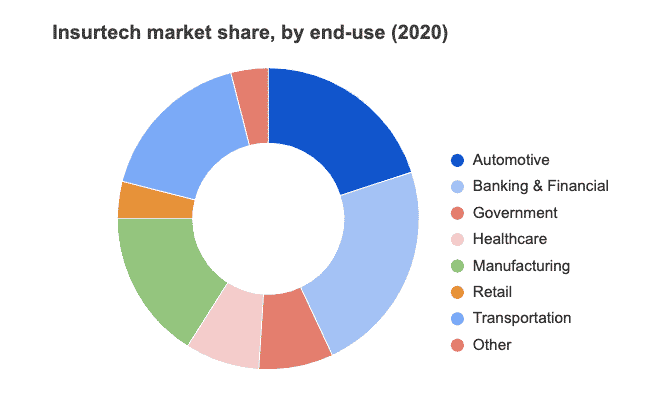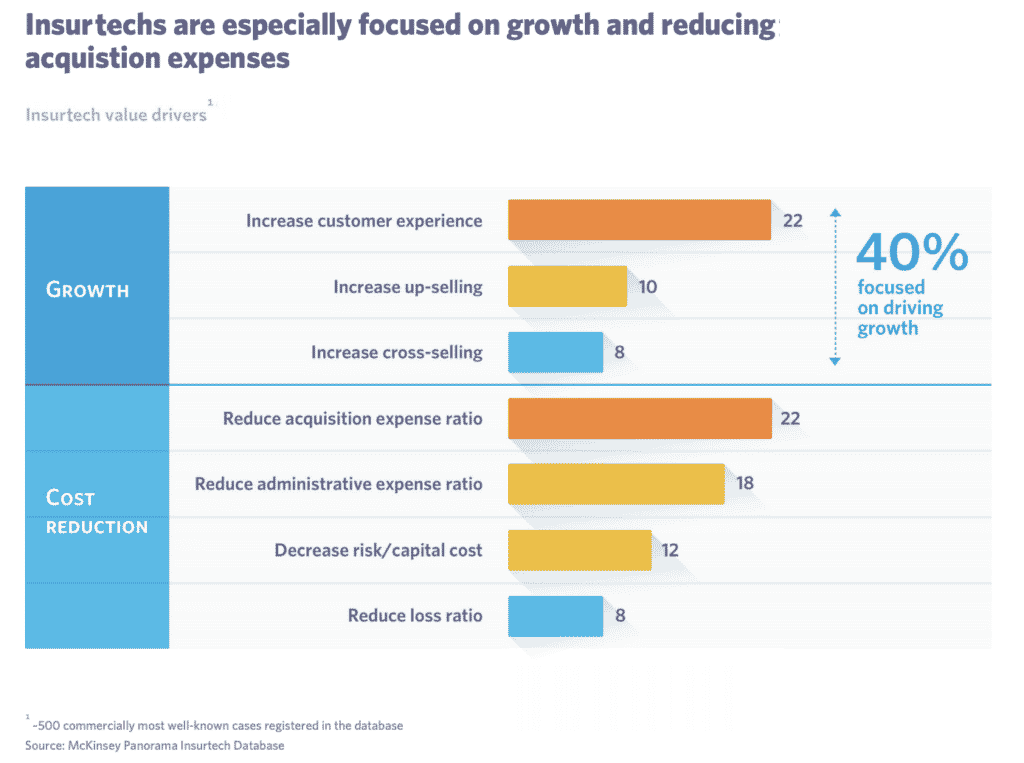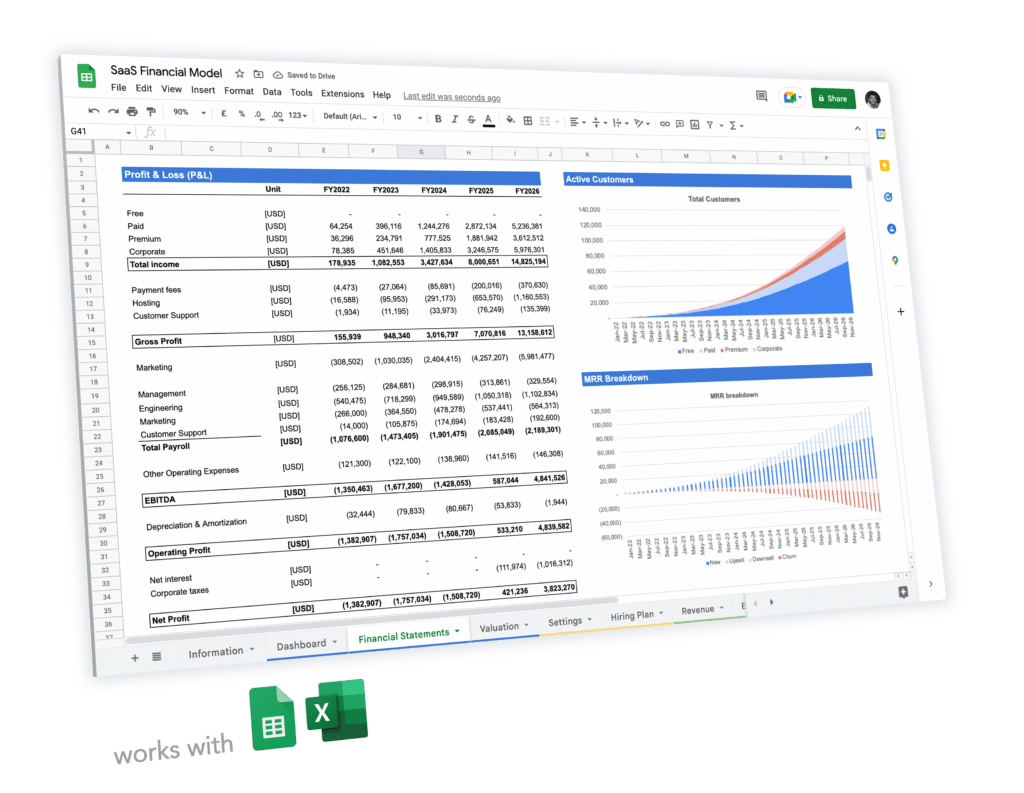How To Create a Insurtech Startup Pitch Deck (+ 3 Examples)

The global insurtech market is expected to be worth $61 billion by 2028, up 10x from today ($4 billion). Across life insurance, property, mortgage or even pet insurance, insurtech is creating endless opportunities for growth for startups in the space. If you are launching your insurtech startup, you will need a rock-solid pitch deck to impress investors.
Insurtech in 2021: an introduction
Before we dive into the slides you need for your insurtech startup pitch deck, let’s first have an glance at the insurtech market today, and more especially:
- What is insurtech exactly? A brief history
- How big is insurtech today?
- Key trends driving growth
What is insurtech? A brief history
By definition, any technology that’s used by an insurance company to increase the efficiency of its operations could be considered insurtech (source).
First came the fintechs, which (successfully) attempted to disrupt the banking sector for more than a decade. Then came insurtech (as you would have guessed, stands for “insurance” and “technology”).
New technology savvy players have been entering the space since 2015, bringing changes to the insurance sector both from an operations (e.g. lower costs) and customer experience (e.g. digitalisation) standpoint.
At first early stage startups, some players have become so big today they even went public (Lemonade in 2020 for example).

How big is insurtech today?
The global insurtech market is estimated at $4 billion today (2021), and expected to grow at an impressive 49% CAGR to 2028 ($61 billion by then).
What are the different segments at play?
Insurtech spans various industries (or end-applications). A representation of the market share of each sector is shown below.

Key trends driving growth
There are 3 main trends driving up growth in the overall insurtech sector. They are:
- The growing demand for insurance service digitalisation solutions. Insurtech for example aims at simplifying the insurance purchasing and claims processes
- Insurtech’s lower operating costs allows companies to create new offerings and ultra-customised insurance policies that large insurance companies have less incentive to offer. This gives them advantage in customer acquisition as they tend to attract more tech-savvy customers who appreciate the customisation and increased transparence
- The lower acquisition costs enabled by a fully digital experience is passed onto the customer: insurtech products tend to be in general cheaper vs. traditional offerings

The 14 slides you need for your Insurtech pitch deck
Every business is unique. Yet, venture capital firms and investors alike all agree on a common structure which we have laid out below.
Your insurtech pitch deck will likely be slightly different depending on whether you are pre-seed, seed or Series A+. Indeed, if you are pre-revenue for instance, you might not have early traction at all.
As rule of thumb, the more advanced your startup is the more content you should have in your insurtech pitch deck. Beware of endless, repetitive presentations: have clear titles, separate slides for each different topic.
Slide 1: Title
The title slide is the front page of your presentation.
Make sure your product or value proposition is clear from the outset: use an image of your product or, better, of your end-user application or instance (a consumer using your product).
Slide 2: The Problem
The problem slide is the “why” of your business. List here the 2/3 friction points you aim to fix with your product.
Slide 3: The Solution
Your startup builds and commercialises a product and/or a service which solves the problem laid out on slide 2. The solution slide should not explain in detail your product nor how it works. Instead, focus on the benefits for your customers.
Ideally, you should compare the pain points explained on slide 2 (the problem) to the benefits your solution brings to your customers. That way, it is crystal clear to investors your solution really adds value to potential customers.
Slide 4: Market Opportunity
In the market slide, you need to clearly identify 2 very important metrics:
- Market size: how big is your market?
- Market growth: how fast does your market grow?
If you are operating in a niche market, chances are that you will face some challenges: the information might not be publicly available. In any case, you should be able to make a high-level estimation of your market. Read our article on market sizing and how to estimate TAM, SAM and SOM for your startup.
When looking for these metrics, you have multiple sources of information: public reports, specialised press, etc. Even public companies publish press releases and annual reports including some of their proprietary market estimates so be sure to look there too.
For important data points on the insurtech industry, have a look at our introduction at the beginning of this article.
Slide 5: Competition
The competition slide follows the market overview and must answer 2 key questions:
How fragmented is your market?
Are there 3 big players sharing 90% market share or thousands of small players? Here, refer to public market reports and your own understanding of the competitive landscape.
A few questions you could ask yourself, among others:
- Who are your competitors?
- Are they local, regional, national or global?
- Are there any product alternatives to your product?
- What about their IP / technological advantage?
Where do you position yourself vs. competition?
Is your solution a game changer other competitors don’t have (yet)? Do you have competitors with similar products/services?
Ideally, you would create a small table with, for each type of competitors and their main characteristics.
For instance, do they all a global presence? Do they cover all the products you offer? What is their relative price positioning (expensive vs. accessible)?
Slide 6: Revenue model
The revenue slide of your insurtech pitch deck is very important. Now that we have clearly identified the problem you are solving and the benefits of your solution, let’s have a closer look at how you generate revenue.
Insurtech companies have different business models, whether they are, for example, actual insurance providers or servicing insurance companies themselves.
Slide 7: Product
Here we need to explain clearly how your product works from a technological point-of-view. Include in your insurtech pitch deck product slide things such as:
- whether you have a white-labelled solution or a proprietary back-end / database?
- do you hold any intellectual property at all?
- how many full time front/back-end engineers you have
- how much you invested already in your tech
- Etc.
Slide 8: Go-to-market
The go-to-market slide of your insurtech pitch deck explains how you acquire your customers. Acquisition can either be online or offline (or both):
- Online acquisition: pay-per-click campaigns (e.g. Google Ads), content & SEO, social media, etc.
- Offline acquisition: print ads, events & fairs, mail, etc.
Arguably, most insurtech startups mostly use an online acquisition, and more importantly a outbound acquisition strategy (see below). Online acquisition is sub-divided into 2 main categories itself:
- Inbound acquisition: customers convert from leads, at the top of funnel, who visit your landing page or website. These visitors (also referred to as “traffic”) either come from paid ads or organic sources (SEO, content)
- Outbound acquisition: customers are acquired via a sales team who actively reach out to potential customers. Because leads do not come by themselves but you reach out to them, this is an “outbound” strategy instead. Outbound is, for example, used by many B2B businesses (Enterprise SaaS for instance)
Note: to forecast customer acquisition, have a read at our article here (+ free template)
Slide 9: Traction
Only include the traction slide if you already have some early traction. Traction can be revenues for instance, but not necessarily (e.g. if you have sign-ups, free users, etc.).
As rule of thumb, the more historical performance you have, the more details you should give. For instance, if you start generating revenues 12 months ago and experienced a steady growth until then, include a bar chart of your revenues (or customers, patients, etc.) over the past 12 months.
Instead, if you have limited financial performance and/or numbers have been quite volatile, include today’s numbers instead.
Slide 10: Team
The team slide is one of the most important: investors invest in great teams before anything else.
The slide can either include the co-founding team only, but can also include key professionals and/or advisors as well.
Include key team members if they add real value.
Also, only include advisors if they are relevant to your industry. Do you have angel investors with significant experience who advise you on strategy?
For the team members’ details, keep it simple: name, position, years of experience and/or previous companies is more than enough.
Note: add a clickable link to the respective Linkedin profiles so investors can refer to a more exhaustive resume for your team members (if relevant)
Slide 11: Roadmap
The roadmap slide tells investors where you are going and how is product going to evolve in the future. You can either keep it high-level (e.g. your long-term strategy) or more detailed (e.g. the pipeline of the near-future product features).
Investors do not just invest in your product as it is today. For example, you might only have developed a MVP with limited features for early-adopters while your product could be tweaked and serve a much larger customer base in the future.
Also, you might be broadening the type of products you offer in the future. Or you might introduce premium services such as a subscription, or premium listing fees. All of these additional features are very important to add in your investment deck.
Slide 12: Financial Plan
Along with your product and the team, the financial plan slide is highly important. Unfortunately, many startups overlook the importance of financial projections in their insurtech pitch deck.
Think about your audience: investors (venture capital firms or angel investors) are financially literate individuals. As such, they invest in your business to generate returns. Logically, they care a lot about your financials and more especially, the expected financial performance of your business.
Do not expect investors to make up their own plan for your startup if you haven’t. As CEO, founder or entrepreneur alike, you should have a clear idea of where you are going.
As rule of thumb, the more advanced your startup is, the more granularity you should include here. Pre-seed startups might keep it short (1 slide) yet we recommend seed and Series A+ startups to include 2 slides instead.
Note: when presenting your financials, we recommend for pre-seed startup to show 3 years. Instead, seed and Series A+ startups should include 5 years projections as investors will likely ask for it for their own return analyses purposes.
Slide 13: Funding Ask
All pitch decks have a clear goal: raising capital from investors. The funding ask slide is where you clearly state your ask: how much are you raising?
Read our article on how to determine how much you should raise for you startup. While raising too little creates obvious problems, raising too much isn’t necessarily better.
On top of the amount, a good practice is to include a pie chart of where you will spend that money over a given period (your runway). Will you spend the bulk of it in product development to build your MVP? Or will you use a large portion in sales & marketing to commercialise your product and find product-market fit?
Our financial model templates include a cash burn dashboard where you can easily assess how much you should raise, and where you will spend your money. We also included charts ready to be included in your pitch deck. See how to use our cash burn dashboard here.
Slide 14: Contact
The contact slide is the last slide of your presentation. It has 2 main goals, this is where:
- You open the floor to questions from your audience when you are pitching
- You provide contacts (email and telephone) for investors who would only receive the PDF version of your presentation
3 Insurtech Pitch Deck Examples
Alan
Alan is a France-based platform that uses technology to make health insurance more convenient and affordable.
Fundraising round details:
- 2020
- Series C
- $54m
Bind
Bind is a US-based insurtech founded in 2016 that provides personalised, cost-transparent and flexible private health insurance plans.
Fundraising round details:
- 2018
- Series A
- $60m
Oscar
Oscar is a US-based insurtech startup that provides healthcare for individuals and groups. It offers a variety of coverage plans available nationwide and personalized customer care.
Fundraising round details:
- 2014
- Seed
- $30m


 5-year pro forma financial model
5-year pro forma financial model 20+ charts and business valuation
20+ charts and business valuation  Free support
Free support